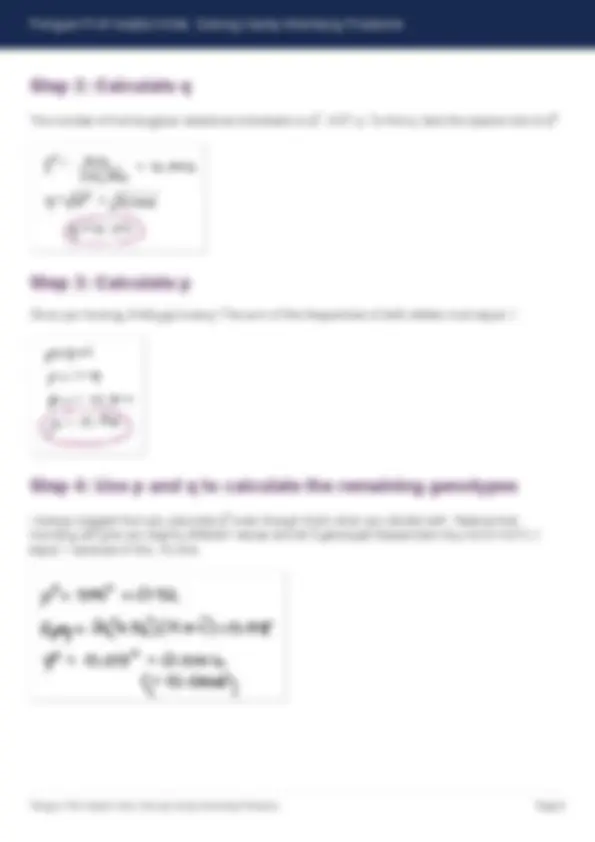




Study with the several resources on Docsity

Earn points by helping other students or get them with a premium plan


Prepare for your exams
Study with the several resources on Docsity

Earn points to download
Earn points by helping other students or get them with a premium plan
Community
Ask the community for help and clear up your study doubts
Discover the best universities in your country according to Docsity users
Free resources
Download our free guides on studying techniques, anxiety management strategies, and thesis advice from Docsity tutors
Learn how to determine the frequencies of dominant and recessive alleles, as well as homozygous dominant, heterozygous, and homozygous recessive genotypes in a population using the hardy-weinberg equilibrium. Follow this step-by-step guide with examples.
What you will learn
Typology: Study notes
1 / 4

This page cannot be seen from the preview
Don't miss anything!



Hardy, Weinberg and Castle determined that the frequencies of alleles and genotypes in a population remain the same over time, given that certain assumptions are met:
How to solve Hardy-Weinberg Problems:
Simplify this statement using the FOIL rule: p^2 + pq + pq +q^2 = 1 p^2 + 2pq + q^2 = 1
p^2 = frequency of homozygous dominant genotype 2pq = frequency of heterozygous genotype q^2 = frequency of homozygous recessive genotype
In a population of 130,000 magical mice, green fur is dominant over orange. If there are 300 orange mice in a population of 130,000, find the following (assume population is in Hardy-Weinberg equilibrium):
Check out my video "The Hardy-Weinberg Principle" on the Penguin Prof YouTube channel. Good luck!